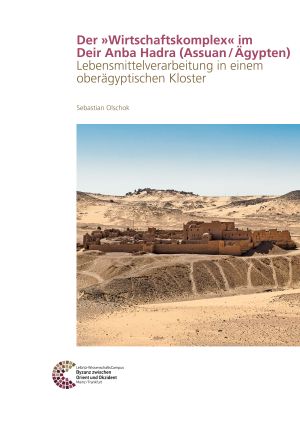Olschok, Sebastian
Der »Wirtschaftskomplex« im Deir Anba Hadra (Assuan / Ägypten): Lebensmittelverarbeitung in einem oberägyptischen Kloster
The Coptic monastery of Deir Anba Hadra is located opposite the southern Egyptian city of Aswan on the west bank of the Nile. This largest and best-preserved monastery in the region has been researched since 2013 by an interdisciplinary project within the framework of a DAI concession. The “economic complex” on the upper terrace was investigated in terms of construction history and archaeology as part of this project. In the evaluation, 16 construction phases were identified, which can be associated with different functions, and it is possible to identify this building complex as a site for food production. Bread, castor oil, wine and garum were produced here.
The building history research has shown that the core of the complex was originally built as an oratory for the monks´ hourly prayers. With the addition of several functional rooms, it was extensively redesigned after the 6th/7th century. This transformation made it possible to set up a bakery, the capacities of which were gradually expanded. With the construction of a crushing basin castor oil could be produced in the northern part of the building complex. Further north, a wine press was added, and two tanks were built in the immediate vicinity of the press. They were probably used to produce garum. In addition to the deliberate dismantling of individual walls, fireplaces and feeding troughs are evidence of the use of various walls even after the end of the use of Deir Anba Hadra as a monastery.
The production facilities identified at Deir Anba Hadra were compared with installations in the (late) ancient Mediterranean. Through these comparisons, not only technical details can be explained, but also production processes.







